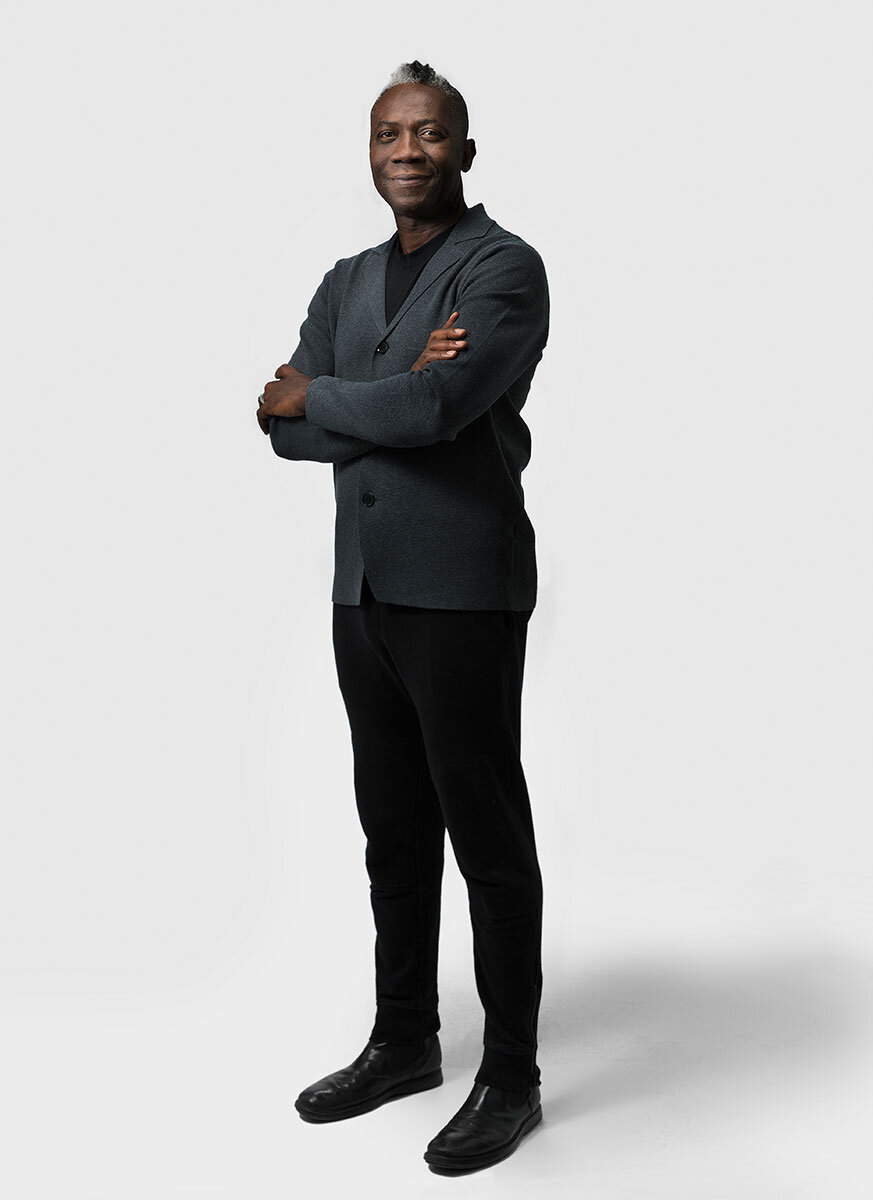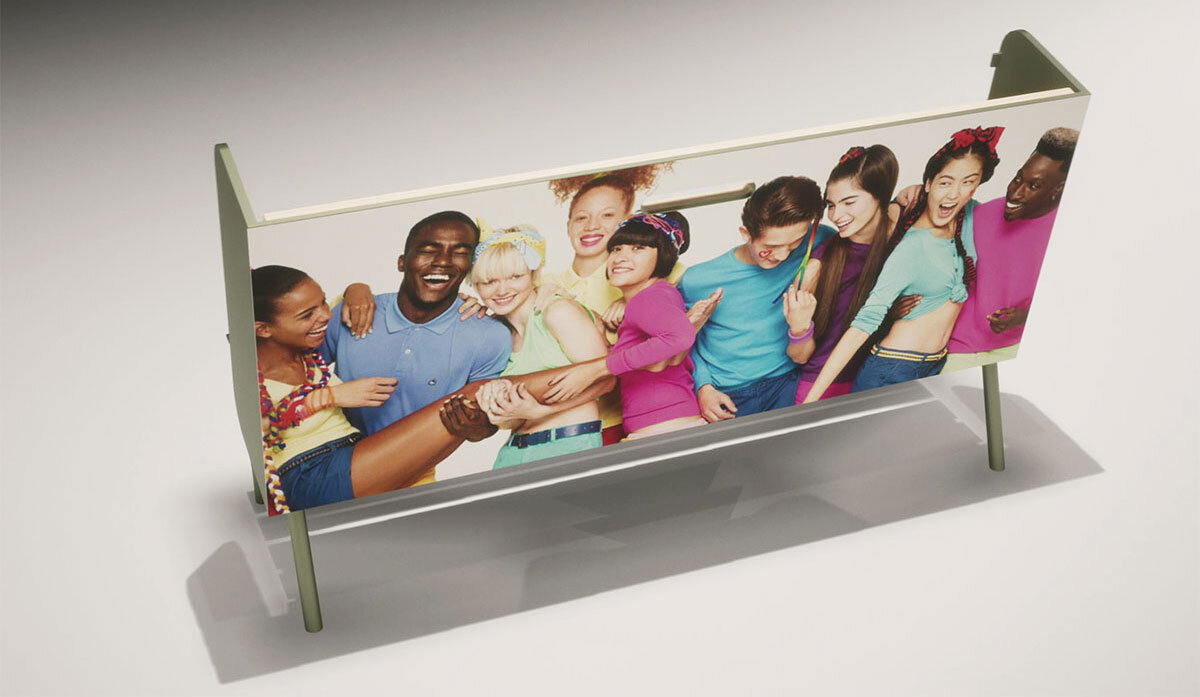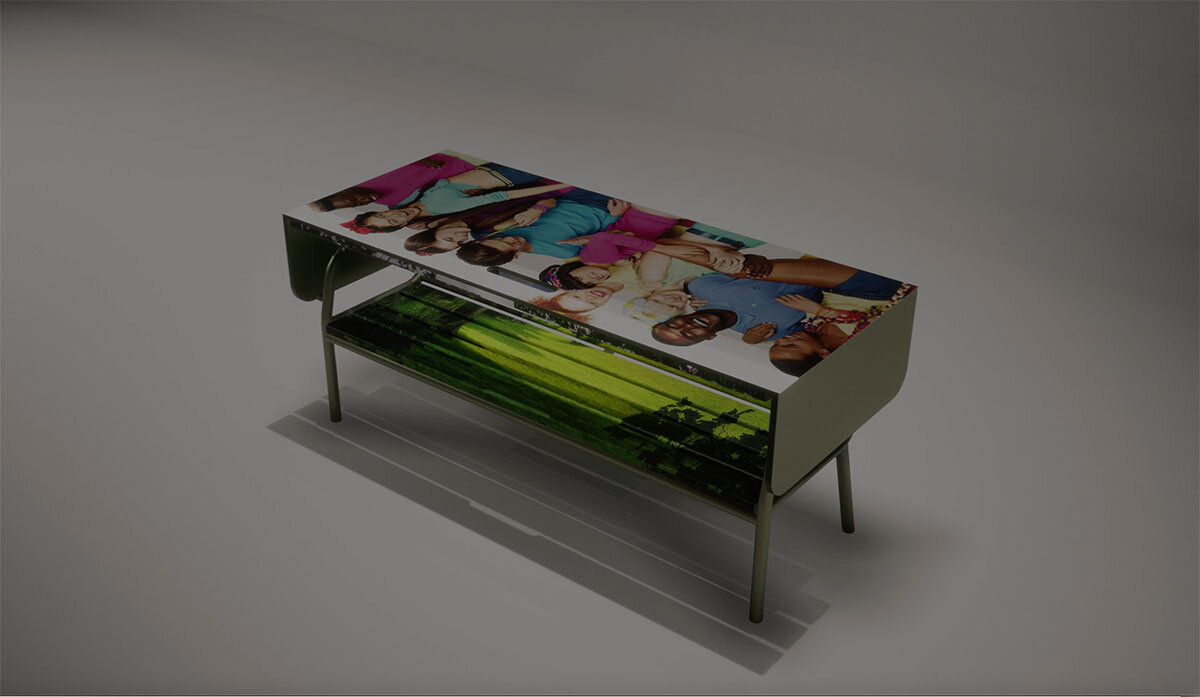Here B&B (Bench&Bed) – Charles O. Job
Here B&B (Bench&Bed)
Charles O. Job
Who owns public space and why are certain population groups invisible in it or seem irrelevant to the system? With “Here B&B”, Charles O. Job develops a park bench that transforms into a temporary shelter for those who don't have one, in combination with an advertising space to finance social infrastructure.
The pandemic has made us question the status quo and challenged us to re-think new possibilities. It prompted hard questions about what is relevant and what is not! It has shown us that we are stronger as a united community. We now appreciate the importance of urban space as a resource for all segments of the population.
“Here B&B” is an urban furniture designed to satisfy two seemingly contradictory needs, unlimited consumption and shelter, a basic need in life.
The billboard is a large advertising space designed to attract the attention of passers-by. Billboards are simple, eye-catching, communicative, presenting a product to a maximum number of people without too much effort. Over the years, billboards have proven to be one of the most successful advertising media for the mobile consumer, as they are practically unavoidably visible and present.
Homeless people are those who lack stable and adequate housing. Compared to the general population, homeless people have higher rates of negative physical and mental health effects. They do not fit into the picture of a clean, tidy cityscape. But just like advertising, homelessness has become a part of urban life.
The project does not aim to solve the problem of homelessness (this would be cynical) but highlights a disadvantaged group of the population. It discourages separation and exclusion and encourages looking for solutions for the community together.
Questionary
How would you describe your style?
Straight, simple & self-explanatory.
Which themes occupy you in your work?
Getting the maximum out of the minimum.
Is design relevant to the system?
Only when it offers answers to the questions that concern us all as a society.
What do your parents think you do?
That I play/fabricate as much as ever!
Who are your real-life heroes?
Clever colleagues who invent things!
Why is design important?
Because design can move.
What does a normal design process look like for you?
Idea> Sketches> <Idea> &Questions> Model...> Questions> Questions> Prototype... maybe!
What makes you happy and what makes you unhappy?
Having ideas :) / Not having ideas :)
About
Charles O. Job studied architecture at Oxford Brookes University and is professor of design theory at the Bern University of Applied Sciences. He has won several international design awards and realised products for various international producers. He has a fundamentally playful attitude to design.
Curators’ Comment
Charles O. Job's project provokes a debate about how our society deals with the inclusion of homeless people. Can the city provide a real “roof over their head” situation? Or should we collectively look for ways to get the homeless off the streets? As a person looking at this, how do I relate to homeless and marginalised people? Am I helping?
A personal emotional clash becomes palpable in Charles' project and stimulates us to think and act further in terms of an inclusive approach. (Andreas Saxer)



